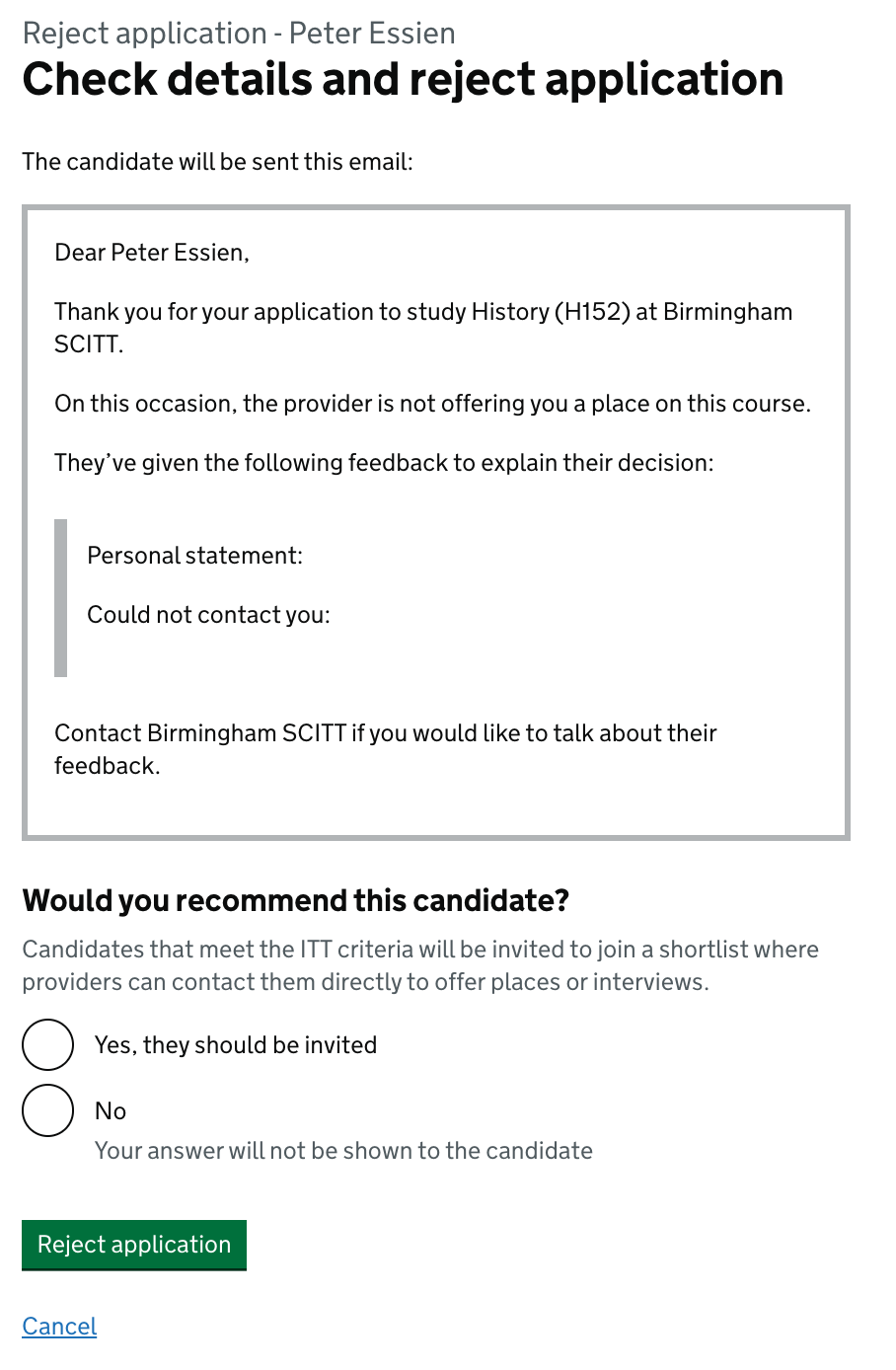
If a candidate meets all the initial teacher training (ITT) criteria, they can still be rejected for other reasons. We wanted to test the idea of a ‘shortlist of eligible candidates’ that training providers could recommend to other training providers.
Our designs tested well but users had more detailed questions of how this ‘shortlist’ would work in practice. We need to do more research on the idea so we’ve not implemented this into the service yet.
The issue
Sometimes candidates get rejected by training providers, even though they meet the ITT criteria. This can happen for different reasons, including:
- if the candidate needs to improve their personal statement
- the course is full
- the provider thinks the candidate would be suitable for a different course
- the candidate’s degree is a 3rd class degree and the training provider only accepts a degree class of 2:2 or above
What we changed
On the page where we show the preview of the email that will be sent to candidates when a provider rejects their application, we added a further question. The question asks training providers if they would like to recommend a candidate to join a shortlist.
This new question would only show if the candidate meets all the ITT criteria.

Research
We tested this design with 9 training providers alongside other changes.
Most users found the concept of ‘recommending’ a candidate confusing. They had to read the question and hint text several times to understand it.
Users were not sure if it was their responsibility to recommend candidates. They felt hesitant to recommend someone and wanted more information on how seriously this recommendation would be taken.
Once they understood the concept, nearly all users said they would recommend candidates if their own courses were full. Some also mentioned they would recommend candidates if they had a weak personal statement because this would be a subjective assessment and other providers might be ok with the same personal statement.
Users were much more confident in knowing when they would not recommend candidates. For example, if:
- the candidate had a poor interview
- the candidate could not be contacted
- there were serious safeguarding concerns
Future considerations
Overall, we think this idea needs more thought and testing on how it would work in practice.
Users had questions about how:
- the shortlist would be shared
- big the shortlist would be
- they could filter down to candidates that match their own set criteria
Users also wanted assurances that:
- candidates would understand that getting shortlisted wasn’t a definite
- they would not have to commit to using the shortlist
- they would have enough information about candidates on the shortlist before contacting them
We will not implement these designs until we’ve done more testing around the idea.